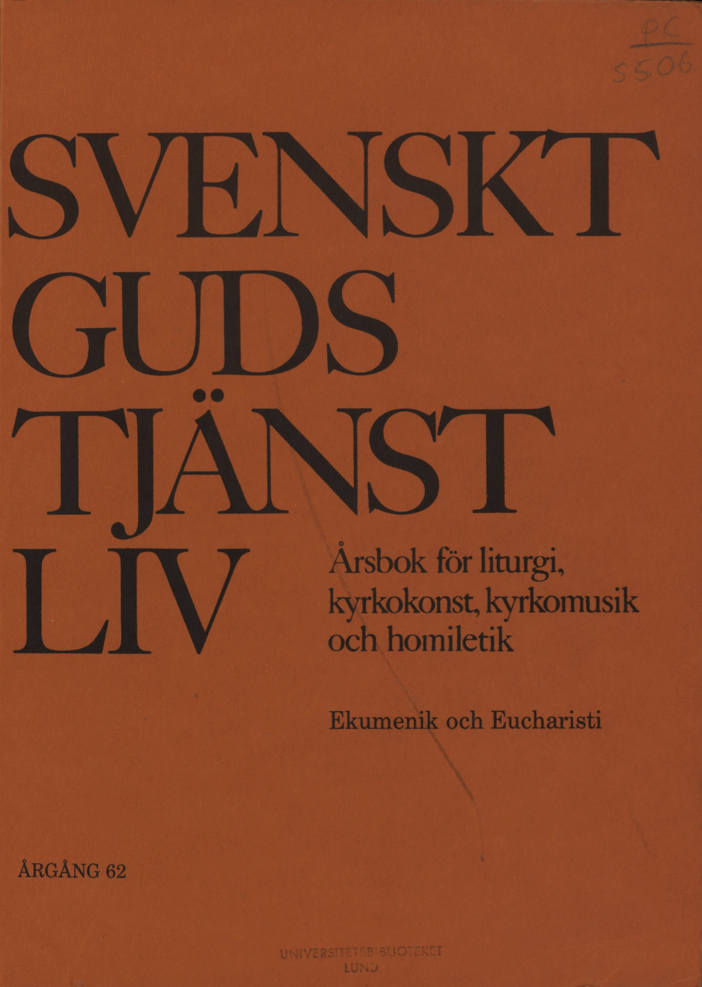De eukaristiska bönerna i Svenska kyrkans mässordning 1986. En internationell jämförelse (The Eucharistie Prayers of the Swedish Mass 1986 - An International Comparison)
Abstract
In 1986, the Church Assembly of the Church of Sweden accepted a new liturgy for the eucharist. Since the 1970s the Swedish Church has been experimenting with liturgical forms, including eucharistic prayers. The new liturgy of 1986 contains no fewer than eight alternative eucharisitic prayers. For over a decade the Church tested an order that contained three alternatives of similar structure and length (Gudstjänstordning, 1976). The revision group that worked out the proposed form of the new liturgy decided that alternatives must be different in structure and content to be true alternatives. The more classical common structure of the 1976 prayers was abandoned for considerable variation in formulation and structure in the eight new prayers. This decision was supported in principle by the Church’s Central Board, Doctrinal Commission and the Church Assembly’s Committee on Evangelisation and Worship which each worked with the proposed liturgy at various times. Thus, this is a rather bewildering col lection of alternatives. Two have all the classical parts in an order which was suggested by the Doctrinal Commission (praise to the Fat her, epiclesis over the communicants and the elements, institution narrative, anamnesis, concluding doxology). Some lack an anamnesis, some lack an epiclesis, two have no doxology and omit the congregation’s Amen at the end (these continue directly with the Lord’s Prayer instead). One of the prayers, a text pre pared in common with the Swedish Mission Covenant Church, has an anamnesis which is adressed not to the Father, but to Christ. Two of the prayers contain intercessions, highly unusual for non-Roman eucharistic prayers. In accepting this liturgy, the Church of Sweden becomes possibly the first Lutheran church to officially abandon the old Lutheran custom of letting the Words of Institution stand alone instead of enclosing them in a eucharistic prayer. This custom is still common among Lutherans, and the question of not including it as a liturgical alternative would still be a very sensitive one in many churches. To this extent, the Church of Sweden shows very considerable evidence of the influence of BEM and other ecumenical contacts in the liturgy, but the form which this influence should take in the eucharist is not yet very clear.
Downloads
Publicerad
Nummer
Sektion
Licens
© författarna, Laurentius Petri Sällskapet för svenskt gudstjänstliv samt Artos & Norma bokförlag. Det är tillåtet att kopiera och använda material ur Svenskt Gudstjänstliv för forskningsändamål om källan anges. För övriga ändamål kontakta respektive artikelförfattare samt förlaget. Särskilda restriktioner kan gälla för bildmaterial.


